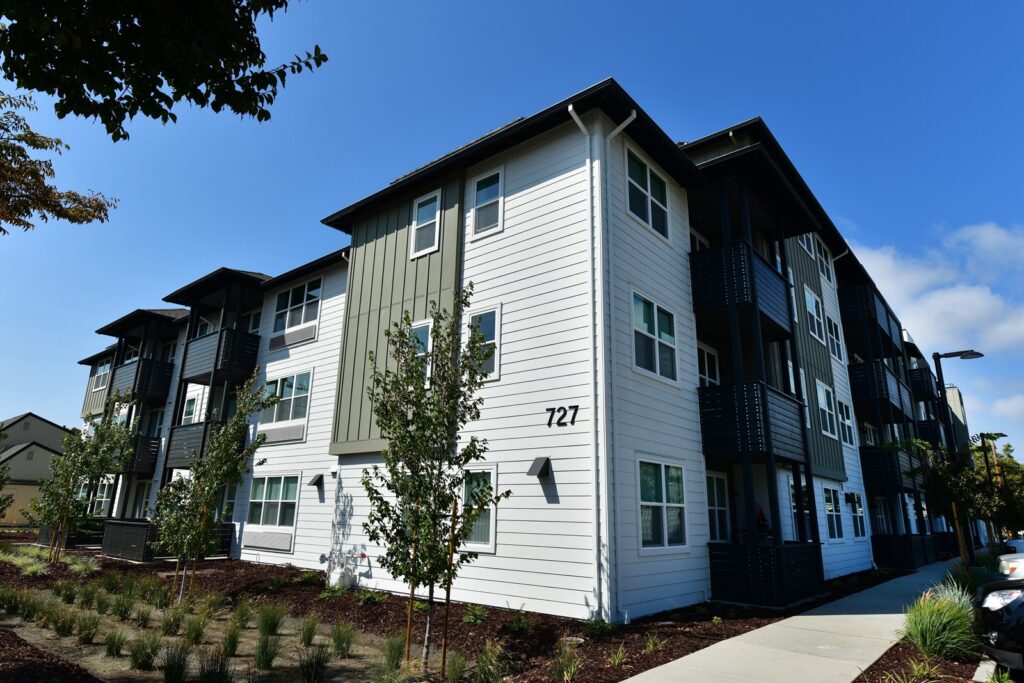Legislator says previously failed $10 billion bond for programs must be on ballot
The Rosefield Village is a Low-Income Housing Tax Credit project in Alameda for low-income Alameda school district employees. JOSE CARLOS FAJARDO — STAFF PHOTOGRAPHER
By Kate Talerico ktalerico@bayareanewsgroup.com
February 19, 2025
https://enewspaper.mercurynews.com/infinity/article_popover_share.aspx
California voters could soon be asked to authorize spending billions of dollars on new affordable housing.
East Bay Assemblymember Buffy Wicks and state Sen. Christopher Cabaldon, a Yolo County Democrat, this week brought back a proposal to place a $10 billion bond for affordable housing programs on the June 2026 ballot after failing to get the measure on the November 2024 ballot.
If approved, the measure would authorize bonds to build low-income rental housing and supportive housing for people experiencing homelessness across the Golden State, among other purposes.
“These bonds are a necessary step to address the staggering need for safe, stable and affordable housing,” Wicks, an Oakland Democrat, said in a statement. “Even in a tight fiscal climate, we must act with urgency.”
With a limited capacity to authorize new bonds, the state legislature last year decided to prioritize two other bond measures of $10 billion each over Wick’s housing measure — one to pay for renovations to public schools and community colleges, and the other to fund climate resiliency projects. Both bonds passed, with 59% and 60% of the vote, respectively.
There had also been a question of whether voters had the appetite for two state housing bonds in one year. In March 2024, voters narrowly passed Gov. Gavin Newsom’s $6.4 billion ballot measure to add thousands of mental health beds for homeless people and other vulnerable residents.
But Cabaldon expressed confidence in the legislature’s willingness to ensure the measure gets on next year’s ballot.
“The housing bond is next in line,” Cabaldon said in an interview. “This issue is consistently at the top of the priority list for Californians.”
But some conservatives and anti-tax groups say a massive bond measure is not the right approach.
“The legislature should focus on removing laws and regulations that make housing construction slower and more expensive in California than in other states, as well as laws that unhelpfully burden the private market in rental housing,” the Howard Jarvis Taxpayers Association said in a statement.
Louis Mirante, a housing policy expert for the the pro-business Bay Area Council, said that while he expects the state Assembly to pass the bill authorizing the bond, he’s unsure whether it will clear the state Senate, which last year more strongly supported the climate resiliency bond than Wicks’ original housing bond.
“A lot of housing bills have died in the Senate that passed through the Assembly,” he said.
Advocates say the need is pressing. Housing costs in California continue to shoot upward, even as the state slowly builds its way out of a decades-long shortage. The state has said it must build 300,000 new housing units annually, including 125,000 affordable units for lower-income households. However, California has produced only around 13,000 affordable units per year between 2014 and 2023.
One reason is that building affordable housing requires significant subsidies — and developers typically cobble together different competitive federal, state and local funds to fully finance a project. In the nine-county Bay Area alone, there are roughly 41,000 affordable units in the pipeline ready for construction that are simply awaiting financing.
Of the $10 billion in proposed bonds, half would go to the Multifamily Housing Program, which provides low-cost loans to developers of affordable housing, such as the 100-unit affordable La Avenida Apartments in Mountain View and the 54 low-income units at 1740 San Pablo Avenue in Berkeley.
The state has used similar voter-approved general-obligation bonds, debt that is paid back using normal taxes and revenues, to fund its housing initiatives in the past. California’s last housing bond, the Veterans and Affordable Housing Bond Act of 2018, authorized $4 billion for various affordable housing programs, though the funds were fully allocated by the end of 2024.
The nine-county Bay Area last year also attempted to put forth its own housing bond, worth $20 billion. Unlike the statewide bond, which requires a simple majority to pass, the regional bond would have required a two-thirds majority and would have been paid for using new property tax revenue.
At the eleventh hour, regional leaders yanked the measure from the ballot, citing dwindling voter appetite for new taxes. An August 2024 poll conducted by the Bay Area News Group and Joint Venture Silicon Valley found 50% of respondents expressing support for the $20 billion bond, well below the two-thirds threshold required to pass.
Voters also rejected a concurrent proposition on the ballot that would have lowered the threshold needed to pass local bond measures from two-thirds to 55%. Local elected officials read the loss as a sign that voters have grown fatigued of property tax increases.
It’s unclear whether local politicians will propose the regional bond measure again in the next few years, given how far they appear to be from the two-thirds approval necessary to pass it.
Daniel Saver, deputy executive director of housing and energy at the Metropolitan Transportation Commission, which organized the $20 billion regional housing measure, said regional leaders will come together next month to discuss whether to put the measure back before voters in 2026 or at a later date.
Housing advocates say passing both the statewide bond and the larger regional bond is important, given the acute demand for affordable housing, especially in the Bay Area.
“This legislature has really read the results of the last election … as a call to action for affordability and for doing more for the average Californian,” said J.T. Harechmak, policy director of the Non-Profit Housing Association of Northern California, one of the housing bond’s main supporters. “The bond will take some time to roll out, but it would have a big impact on affordability.”


